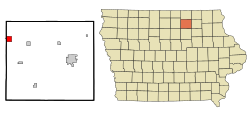
Union County is the southernmost county in the U.S. state of South Dakota. As of the 2020 census, the population was 16,811, making it the 13th most populous county in South Dakota. Its county seat has been Elk Point since April 30, 1865. Originally named Cole County, its name was changed to Union on January 7, 1864, because of Civil War sentiment.

Floyd County is a county located in the U.S. state of Iowa. As of the 2020 census, the population was 15,627. The county seat is Charles City.

Gilbertville is a city in Black Hawk County, Iowa, United States. The population was 794 at the time of the 2020 census. It is part of the Waterloo–Cedar Falls Metropolitan Statistical Area.

La Porte City is a city in Black Hawk County, Iowa, United States. The population was 2,284 at the 2020 census. It is part of the Waterloo–Cedar Falls Metropolitan Statistical Area.
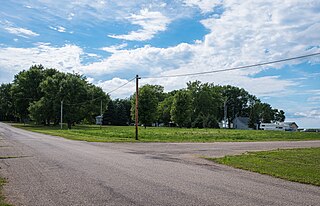
Yetter is a city in Calhoun County, Iowa, United States. The population was 19 at the time of the 2020 census.
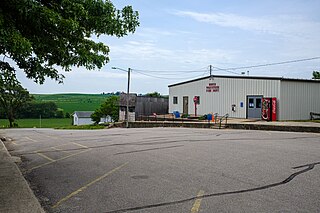
Wiota is a city in Cass County, Iowa, United States. The population was 91 at the time of the 2020 census.

Plymouth is a city in Cerro Gordo County, Iowa, United States, along the Shell Rock River. The population was 375 at the time of the 2020 census. It is part of the Mason City Micropolitan Statistical Area.

Rock Falls is a city in Cerro Gordo County, Iowa, United States, along the Shell Rock River. The population was 150 at the time of the 2020 census. It is part of the Mason City Micropolitan Statistical Area.

Everly is a city in Clay County, Iowa, United States. The population was 575 in the 2020 census, a decline from 647 in 2000. The Ocheyedan River flows to the south and west of the city. Famous people born here include Vern Fear.

Superior is a city in Dickinson County, Iowa, United States. The population was 132 at the time of the 2020 census.

Maynard is a city in Fayette County, Iowa, United States. The population was 476 at the time of the 2020 census.
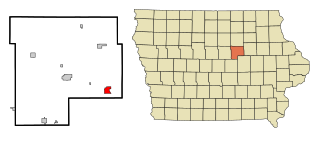
Reinbeck is a city in Grundy County, Iowa, United States. The population was 1,662 at the 2020 census—a five percent decrease from the population of 1,751 in 2000. It is part of the Waterloo–Cedar Falls Metropolitan Statistical Area and is in the Cedar Valley.
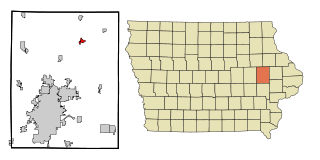
Central City is a city in Linn County, Iowa, United States. The population was 1,264 at the 2020 census. It is part of the Cedar Rapids Metropolitan Statistical Area.

College Springs is a city in Page County, Iowa, United States. The population was 172 at the 2020 census.

Merrill is a city in Plymouth County, Iowa, United States, along the Floyd River. The population was 717 at the time of the 2020 census.
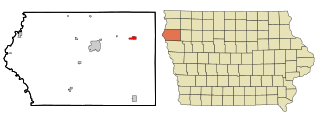
Remsen is a city in Plymouth County, Iowa, United States. The population was 1,678 at the time of the 2020 census.
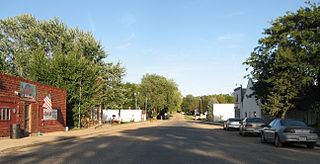
Westfield is a city in Plymouth County, Iowa, United States. The population was 123 at the time of the 2020 census. It is the westernmost point in Iowa, this being due to a bend in the Big Sioux River. The nearby Broken Kettle wildlife refuge is one of the few places in Iowa where prairie rattlesnakes are commonly found.

Hanlontown is a city in Worth County, Iowa, United States. The population was 206 at the time of the 2020 census. It is part of the Mason City Micropolitan Statistical Area.

Manly is a city in Worth County, Iowa, United States, whose population was 1,256 at the time of the 2020 census. It is part of the Mason City Micropolitan Statistical Area.

Plymouth is a city in Hennepin County in the U.S. state of Minnesota. A suburb in the Minneapolis–Saint Paul metropolitan area, the city is about 10 miles (16 km) west of downtown Minneapolis.The population was 81,026 at the 2020 census, making it Minnesota's 7th-largest city.
